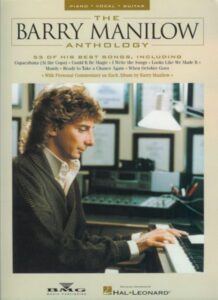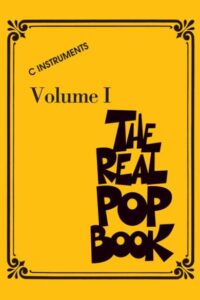Happy birthday, Barry Manilow, born on this in 1943.
Come join us now, and enjoy playing your beloved music and browse through great scores of every level and styles!
Can’t find the songbook you’re looking for? Please, email us at: sheetmusiclibrarypdf@gmail.com We’d like to help you!

Best Sheet Music download from our Library.
Barry Manilow: More Than Just the Songs – The Enduring Legacy of a Pop Icon

Please, subscribe to our Library.
If you are already a subscriber, please, check our NEW SCORES’ page every month for new sheet music. THANK YOU!
Barry Manilow. The name evokes an immediate sensory experience: lush orchestration, soaring melodies, heartfelt (sometimes heart-wrenching) lyrics, and that unmistakable voice – a blend of Broadway bravado and intimate croon, capable of both belting anthems and whispering confessions. For over five decades, Manilow has been a fixture in the pop culture landscape, a songwriter’s songwriter turned superstar performer whose journey from Brooklyn background musician to global icon is a testament to talent, perseverance, and an uncanny ability to connect with audiences on a deeply emotional level.
From Jingles to Stardom: The Formative Years (1943-1974)
Born Barry Alan Pincus on June 17, 1943, in Brooklyn, New York, Manilow’s musical journey began early. Classically trained on piano, he attended Juilliard and the New York College of Music. His initial career path wasn’t center stage, but behind the scenes. He worked tirelessly as a jingle writer and arranger, crafting catchy tunes for brands like McDonald’s (“You Deserve a Break Today”), State Farm, Dr. Pepper, and Band-Aid. This period honed his skills in melody writing and understanding what made a hook stick – a talent that would later define his own hits.
Simultaneously, he worked as a musical director and arranger, most notably for a young Bette Midler in her early, groundbreaking Bathhouse performances. This collaboration was pivotal. He co-produced her first two albums, arranging her signature hits like “Boogie Woogie Bugle Boy,” and absorbed the theatricality and showmanship that would become integral to his own stage persona.
The Breakthrough: “Mandy” and the Rise of the Hitmaker (1974-1980)
Manilow’s solo career began modestly in the early 70s. His self-titled debut album (1973) garnered some attention, particularly for the ballad “Could It Be Magic,” adapted from a Chopin prelude. But it was his second album, “Barry Manilow II” (1974), that catapulted him to superstardom. The lead single, a cover of Scott English’s “Brandy,” re-titled “Mandy”, became his first #1 hit. Its sweeping strings, dramatic key change, and Manilow’s vulnerable yet powerful vocal delivery struck a chord, establishing the template for his signature sound.
What followed was an unprecedented run of chart dominance. Manilow became a hit factory:
- “It’s a Miracle” (1975): Upbeat, optimistic pop showcasing his flair for arrangement.
- “Could It Be Magic” (1975 – re-release): Cemented as a classic, showcasing his classical roots.
- “I Write the Songs” (1975): Though written by Bruce Johnston of the Beach Boys, Manilow made it his own anthem, winning him his first Grammy (Best Pop Male Vocal). It became synonymous with his artistry, despite the irony he didn’t write it.
- “Tryin’ to Get the Feeling” (1975): A masterclass in blue-eyed soul and yearning.
- “This One’s For You” (1976): A sophisticated, jazzy ballad.
- “Weekend in New England” (1976): Perhaps his quintessential power ballad, defined by its breathtaking key change and emotional crescendo.
- “Looks Like We Made It” (1977): Another #1 hit, a bittersweet ode to a love that endured separation.
- “Can’t Smile Without You” (1978): Infectious pop, demonstrating his knack for pure, joyful melody.
- “Copacabana (At the Copa)” (1978): His most theatrical hit. This disco-tinged story-song about showgirl Lola and her doomed love became a cultural phenomenon, winning a Grammy, spawning a TV movie, and remaining his most instantly recognizable track. It showcased his narrative songwriting and flair for the dramatic.
Albums like “Tryin’ to Get the Feeling” (1975), “This One’s For You” (1976), and “Even Now” (1978) topped the charts, packed with hits. Manilow wasn’t just a singer; he was often the songwriter, arranger, and producer – a rare level of control in the pop world. His concerts became legendary spectacles, blending musical virtuosity with theatrical staging and an almost evangelical connection with his audience.
Beyond the Ballads: Versatility and Endurance (1980s-Present)
The 1980s brought shifts in musical taste, but Manilow adapted and endured. While the sheer chart dominance of the mid-70s eased, he continued to produce significant work:
- Broadway & Film: He composed the score for the musical adaptation of “Copacabana” (1994). Later, his deeply personal musical “Harmony” (co-written with Bruce Sussman), based on the true story of the Comedian Harmonists, finally reached Broadway in 2022 after decades in development, earning critical acclaim.
- Concept Albums: He explored jazz standards with “2:00 AM Paradise Cafe” (1984), big band music on “Swing Street” (1987), and revisited the 50s on “The Greatest Songs of the Fifties” (2006) – the latter becoming his first #1 album in decades, sparking a successful series covering subsequent decades.
- Continued Hits: Songs like “Read ‘Em and Weep” (1983), “Somewhere Down the Road” (1981), the duet “I Made It Through the Rain” with his background singers (1981), and “Some Kind of Friend” (1982) kept him on radio and in the hearts of fans.
- Las Vegas Residency: Starting in 2005, his residency at the Las Vegas Hilton (later moving to the International Theater at Westgate Las Vegas) became one of the most successful in the city’s history, running for years and solidifying his status as a premier live entertainer. He later moved his residency to the Westgate.
- Philanthropy: Deeply committed to music education, he donated pianos to public schools across the US and established the Manilow Music Project. He also supported numerous health charities.
The Fanilows and Cultural Impact
Manilow’s fanbase, affectionately dubbed “Fanilows,” is legendary for its devotion, longevity, and diversity. He cultivated an intimate rapport with his audience, making them feel seen and valued. This connection transcended generations; parents who swooned to “Mandy” introduced their children to “Copacabana,” creating a multi-generational appeal.
While sometimes dismissed by critics for being overly sentimental or middle-of-the-road, Manilow’s craftsmanship is undeniable. His understanding of melody, harmony, and orchestration is sophisticated. His songs are meticulously constructed, often featuring complex chord progressions and key changes disguised beneath accessible pop hooks. He bridged the gap between Brill Building pop, Broadway, adult contemporary, and disco with remarkable fluidity.
Personal Life and Legacy
Manilow was famously private about his personal life for many years. In 2017, he publicly came out as gay and announced his marriage to his longtime manager, Garry Kief, whom he married in 2014. He has spoken openly about overcoming health challenges, including hip replacements and a painful facial nerve disorder.
Barry Manilow’s legacy is immense:
- Commercial Juggernaut: Over 85 million records sold worldwide, making him one of the best-selling artists of all time.
- Chart Dominance: An astonishing 50 Top 40 hits on the Adult Contemporary chart, including 13 #1s. 12 consecutive Top 40 albums in the 70s/80s.
- Awards: Grammy, Tony, and Emmy Awards, along with countless other honors.
- The Showman: One of the most successful and enduring live performers in history, particularly renowned for his Las Vegas residencies.
- The Songwriter: A master craftsman whose compositions, even beyond his own hits (like “Even Now,” “Somewhere in the Night,” “Ships” recorded by Ian Hunter), have been covered by countless artists.
- The Voice: An instrument of remarkable range, expressiveness, and instantly recognizable character.
- The Connector: His greatest gift may be his ability to tap into universal emotions – love, loss, hope, joy – and deliver them with a sincerity that resonates deeply.
The Final Cadence?
Even well into his seventies, Manilow continues to perform with remarkable energy, his voice retaining its power and warmth. His 2023-2024 “A Very Barry Christmas” tour and continued performances prove his enduring appeal. The long-awaited arrival of “Harmony” on Broadway added a significant new chapter to his artistic narrative.
Barry Manilow is more than just the songs he wrote or sang. He is an era, a feeling, a masterclass in pop craftsmanship, and a testament to the enduring power of melody and emotion. From the jingles of Madison Avenue to the glittering marquees of Broadway and Las Vegas, his journey is uniquely American. He may have sung “I Write the Songs,” but Barry Manilow’s true legacy is that he lived the music, pouring his heart into every note and creating a soundtrack for millions that continues to play on. He is, without question, an icon whose music truly did “make the whole world sing.”
Browse in the Library:
Or browse in the categories menus & download the Library Catalog PDF:
Barry Manilow – Even Now – Music Video
Barry Manilow – The Best of Me – Live in Indianapolis, IN (1994)
Barry Manilow – Copacabana (At the Copa)
Official video for “Copacabana (At the Copa) (Remix)” by Barry Manilow
Chorus:
At the copa (CO!) Copacabana (Copacabana) The hottest spot north of Havana (here) At the copa (CO!) Copacabana Music and passion were always in fashion At the copa…. they fell in love
Discography

Browse in the Library:
Or browse in the categories menus & download the Library Catalog PDF:
